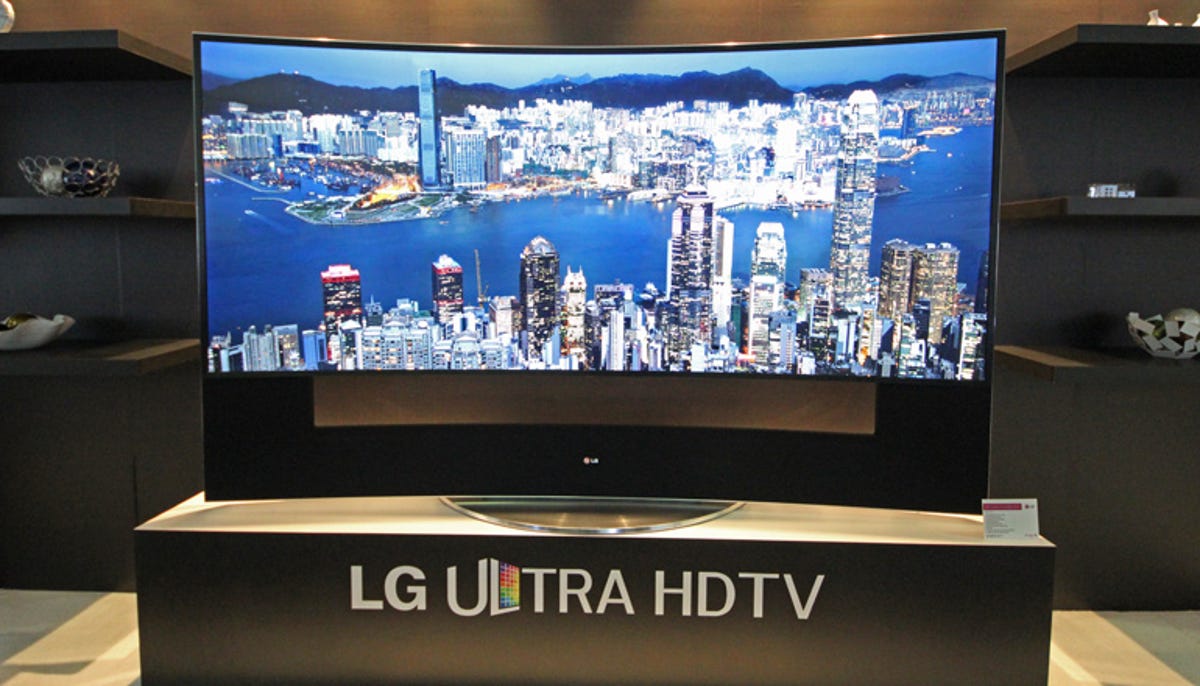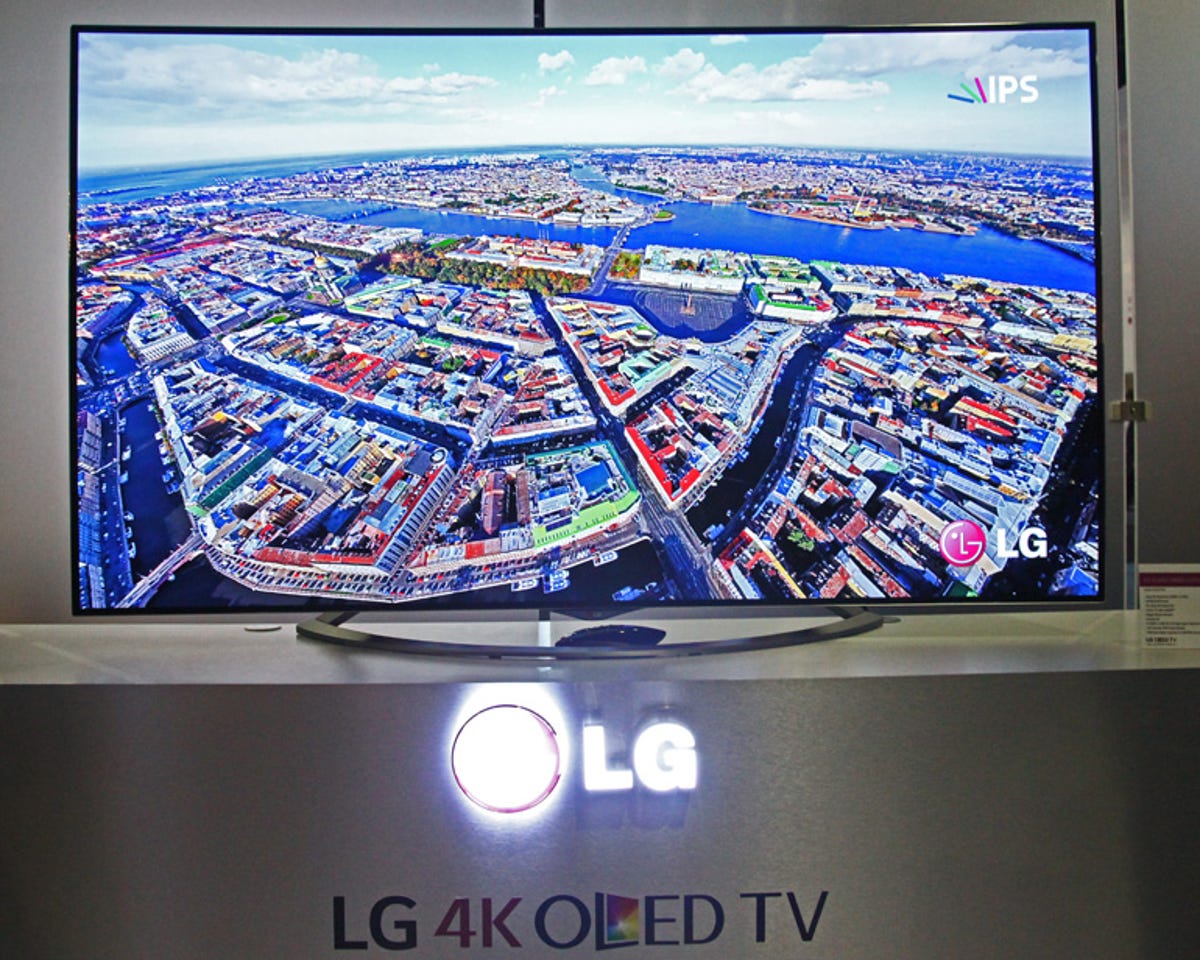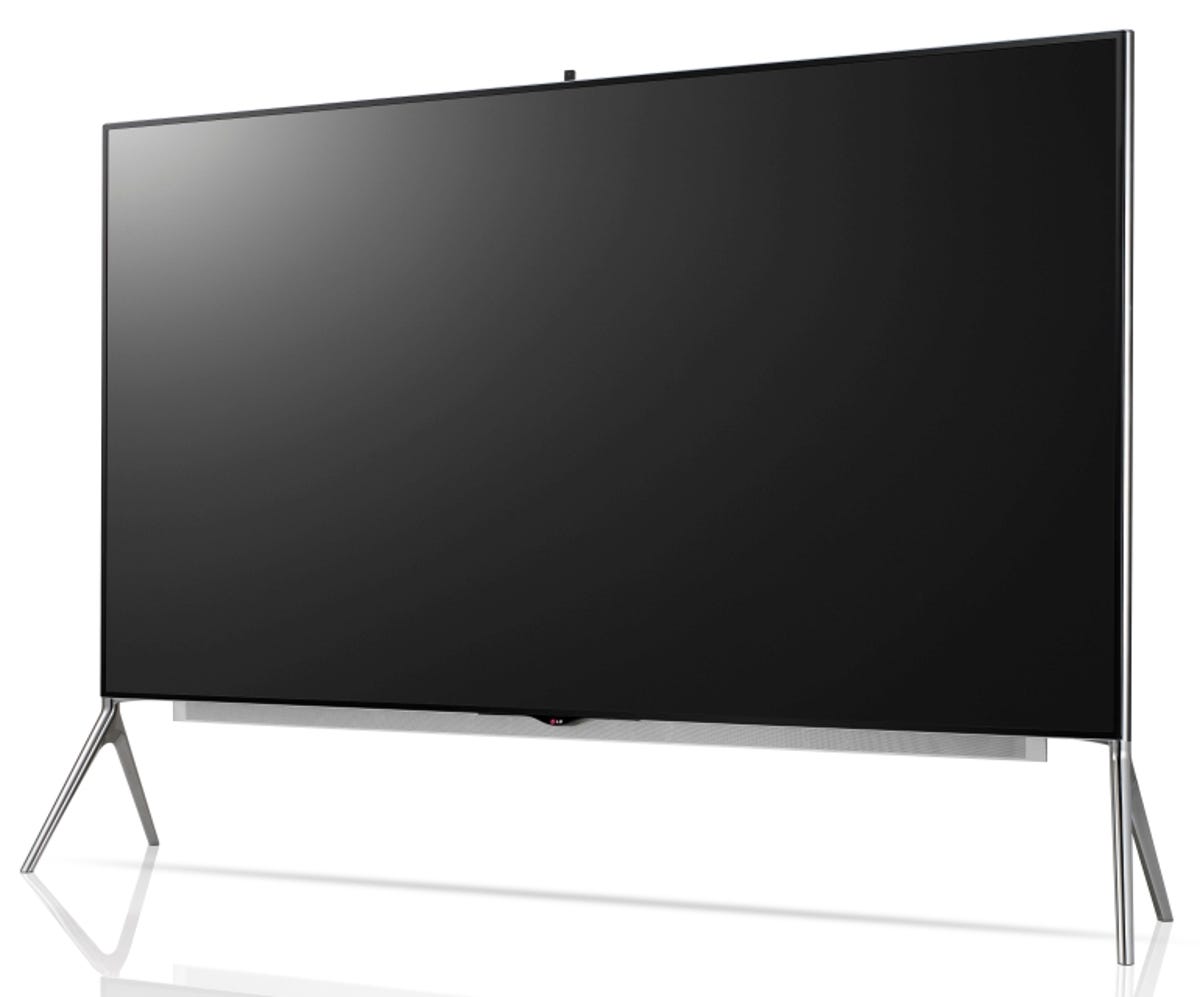
Geoffrey Morrison
At the CEDIA Expo in Denver, LG revealed pricing and availability information on their highly-anticipated 4K OLED TVs, as well as a pair of ultra-massive LED LCDs.
The biggest, a 105-inch curved LCD, costs a cool hundred grand.
Though all of them were previously announced, both at CES and more recently at IFA, this was the official US introduction. I had the chance to give them a quick look on the show floor.
65, 77, 98, and 105. Oh my.
On the 4K OLED front, there are two models, the 65-inch 65EC9700, and the 77-inch 77EG9700. The 65EC9700 will be available in October for $9,999, while the 77EG9700 will be available in November for $24,999.
Given how last year’s 1st gen OLED was $15,000, and this year’s 1080p model is $3,500, I’ll be interested to see how rapidly the prices drop on these models too. Don’t be surprised to see them cost half as much, or less, next year.
In addition to being the world’s first OLED TVs to ship with 4K resolution, both have H.265, HDCP 2.2, LG’s SmartTV+webOS, are wall mountable, and are curved. They still use LG’s WRGB OLED system.


Geoffrey Morrison
I spent a few minutes ogling the 77-inch, showing a loop of scenic vistas from around the world. The image was stunning. Bright, colorful, with deep blacks and (from about 6 feet away) incredible detail. Even on the show floor, these TVs looked great, boding well for their success in stores (compared to plasmas, which didn’t look good under lots of lights).
For ultra-massive Ultra HD, there were two models, the flat 98-inch 98UB9800, and the 105-inch 105UC9 , with a curved screen. The 105UC9 will be available in November for a brace-yourself-price of $99,999. The 98UB9800, also available in November, will be a bargain in comparison, at just $39,999.
Both have full-array local dimming, and IPS panels, and feature sound systems by Harman Kardon. In addition to being curved, the 105-inch set 21:9 aspect ratio, a closer match to ultra-wide-screen movies than to standard 16:9 HDTV shows. Like the 58-inch Vizio XVT3D580CM, an earlier 21:9 TV, LG also touts another advantage of the extended screen width: “it enables users to access viewing information on the side of the screen without blocking any of the ongoing action.”
As a result of its wider shape, the screen also has a higher native resolution than most 4K/UHD TVs: 5,120×2,160. That’s 11 million pixels and change.
In person the 105-inch is quite impressive (top image), a size deserving of 4K and ( arguably) the curve. Showing a loop of Hong Kong, alternating with closeup of plants (ah 4K footage excitement), the detail was excellent. Off-axis was good as well, thanks to the IPS. It was hard to judge contrast ratio under the lights of the show floor, but under those non-ideal conditions, they looked good. It also didn’t seem quite as imposing as other large LCDs (including the 98-inch). Whether this was due to the aspect ratio, the curve, or just the open nature of the booth, I’m not sure.


LG
If you’re keeping track of TVs with screens larger than 100 inches and prices larger than six figures (and who isn’t?), Samsung has also shipped a 105-inch curved 21×9 TV for $120,000 and a flat 110-inch set for $150,000 .
Little Ultra
LG also announced a quintet of smaller Ultra HD models, ranging from 40- to 65-inches. Although none have full array local dimming, otherwise they offer have similar features as their bigger brethren (H.265, WebOS, etc).
UB9200 65UB9200 (65-inch): $2,999.99
UB8200 60UB8200 (60-inch): $2,499.99 55UB8200 (55-inch): $1,799.99 49UB8200 (49-inch): $1,349.99
UB8000 40UB8000 (40-inch): $999.99




